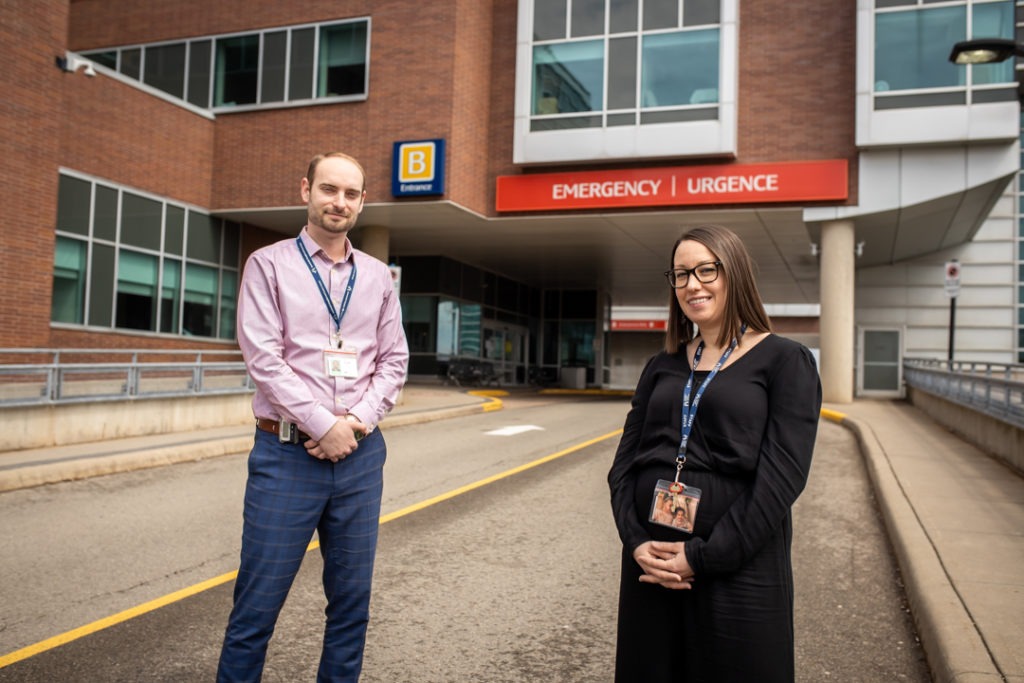
A glimpse into surge planning in an emergency department
When Gabby Martell applied for the clinical lead role at the Juravinski Hospital emergency department to cover a maternity leave, she thought it might be a good opportunity to see if she would enjoy it. Little did she know that a pandemic would sweep in and demand more scenario planning than she’s ever done before.
“It’s been a very fluid situation,” she says. “There’s been multiple reconfigurations of the way we flow our patients. Specifically here because we have a large cancer population and a lot of the patients we see are on chemotherapy, they’re at risk for any sort of infectious disease, COVID-19 being one of the many. So we’ve tried to keep separate pathways through the emergency department.”
Significant reconfiguration
Normally, there’s a straightforward path through the emergency department. Patients move from triage to main waiting room to assessment and then to care and either discharge or admittance to a different area of the hospital.
But now Martell and emergency department Clinical Manager Stuart Paavola have to keep anyone with COVID-19 symptoms away from everyone else, without knowing what the day’s patient volumes will look like.
“In March, we redesigned our screening, triage, and flow of suspected or confirmed COVID-19 patients 3 times in less than 2 weeks,” says Paavola. “Each redesign involved the significant reconfiguration of entire rooms and areas within the ED to keep staff and patients safe.”
Demanding adjustments
Anyone who works in an emergency department is used to a higher-than-normal level of stress and change. But this situation has demanded intense preparation and adjustments.

“Staff have been phenomenal,” says Martell. “Emerg is a very adaptable group of nurses. I think because of the type of medicine we do, it’s constantly changing, evidence is changing, so we’re used to rapid successions of change – but never quite this rapid. Even for us, this is a quick pace of change. It speaks to the quality of nursing that we have in the department, which is excellent.”
Realistic and prepared
The Juravinski emergency department was built to handle 85 patients daily. In the early days of pandemic planning, Martell and her colleagues were planning for up to 200 people, based on worst-case scenarios in other countries and possible provincial projections.
“We want to be realistic and be prepared,” says Martell. “We’re trying to figure out what a surge would look like in all aspects of our department. We’ve looked at things like making less acute areas more acute, like an ICU level patient might be in a non-traditional ICU bed – well, what does that look like? That looks like different equipment that we’ll need at the bedside; that looks like different staffing ratios compared to what’s there. There’s a lot of different layers and implications involved in all of the conversations we’ve been having.”
Thankfully, at this point it looks like all those plans might never see the light of day. For Martell, that’s a best-case scenario.
“We’re planning and mapping all that out for future stages in hopes that we don’t have to use those plans,” she says.
